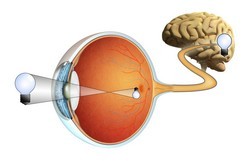Harmonic analysis for vision representation
Scientists of the HAVIX(opens in new window) (Harmonic analysis for optimal coding and the design principles of brain's visual cortex) project focused on resolving issues with data approximation and processing in the primary visual cortex in the brain using harmonic and geometric analysis. Their goal was to develop functional models of neural behaviours of the human visual system. Researchers came up with the idea of embedding visual stimuli data in symmetric spaces such as a generalised wavelet transform after determining the approximate symmetries for such data. They applied harmonic analysis to characterise noncommutative groups in terms of reproducing properties, dimensionality reduction and learning mechanisms. HAVIX members successfully developed a general theory and an all-purpose modular framework for noncommutative shift-invariant systems. This approach allows the characterisation of reproducing systems in a large class of generalised wavelet transforms. Scientists made considerable inroads with regard to computational models of feature extraction in the primary visual cortex. They also developed neural frameworks for spatio-temporal segmentation and reinforcement learning in auditory perception. Using novel harmonic, spectral and nonlinear techniques, they successfully reproduced well known experiments in the neurophysiology and psychology of perception. Results led to the production of eight papers, 14 conferences, a workshop, and three outreach activities. Despite project end, the HAVIX team is already collaborating with other research groups on several new ideas as a result of this work. Project outcomes have deepened our insight into the neural mechanisms of feature extraction in the primary visual cortex. This has applications in improving geometric data encoding and compression, robotic prostheses, machine learning and artificial vision.



